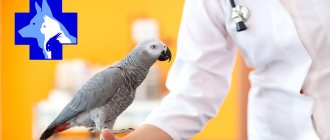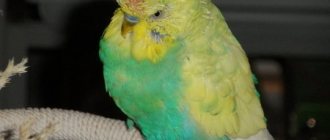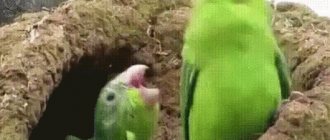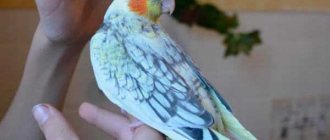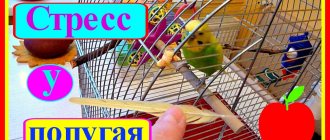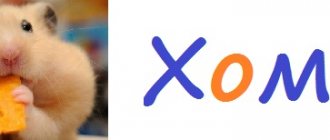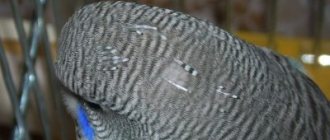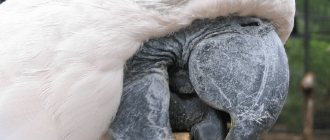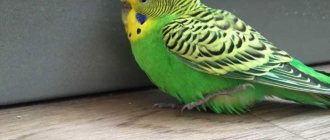There is a common myth that feathered pets do not need special care: just feeding and cleaning the cage will be enough. But pet birds have their own nuances in care, just like cats and dogs.
At first glance, it seems that if a parrot does not “leave” the house, then it cannot become infected with anything, so when a healthy young bird suddenly begins to lose feathers, the owners attribute it to seasonal molting.
Everything is not so simple, and the reasons for this phenomenon can be different. In this article we will cover the topic of feather loss and tell you how you can overcome this avian disease.
Common causes of baldness in parrots
Stress
From a strong emotional shock or prolonged strain on the body's defenses, the bird goes bald, and develops stress molting, accompanied by loss of feathers and exhaustion.
Parrot plumage care. Bathing with a spray bottle.
Cold air, exposure to direct sunlight, prolonged thirst or hunger, pain – all these are the reasons for the pet’s suffering. The cover falls out in bunches, first it is lost under the tail, then around it.
Fright
Sudden fright can be caused by other pets, small children, loud noises or sudden movements near the parrot. At the same time, stress hormones produced by the adrenal glands are released into the blood. If the concentration of the latter is high and does not decrease for a long time, the pet’s condition becomes chronic, and he himself begins to get sick.
Lack of vitamins and microelements
In captivity, a budgie may lack important nutrients in its diet. This is usually associated with improper or poor nutrition. Most often, domestic birds are deficient in vitamins A, D, E, and group B. In this case, the pet becomes bald under the wing, on the head, chest, neck, and tail.
Parrot diseases. Mite or dryness in a budgie. Prevention and treatment #birds
Fungal and tick-borne diseases
Due to the activity of ectoparasites or mycoses, the pet may become completely bald. Some mites eat the feathers themselves, while others, like pathogens of fungal infections, lead to excessive loss of feathers. Bare areas on the body form in the area of greatest concentration of the pathogen, especially under the wings, gradually expanding.
Hormonal disbalance
Most physiological processes are regulated not only by the nervous system, but also by the hormonal system. A deficiency or excess of the corresponding substances can lead to serious “damages” in the body, including baldness.
This problem is observed, for example, in single female cockatiels during the mating season, when frequent laying of empty eggs results in a deficiency of calcium or other important elements. Treatment will require consultation with an ornithologist and, possibly, replacement therapy with special drugs.
A malfunction of the thyroid gland leads to a lack of iodine or the hormone thyroxine, which is also accompanied by baldness. Similar problems occur with dysfunction of the pituitary gland. The latter condition is practically impossible to correct.
Parrot diseases. French molt
French molt in parrots
Signs of French molt in parrots: complete loss of flight feathers on the wings and tail feathers before the young birds fly out of the nest or immediately after that. Birds become completely naked, cannot fly, and move using their beaks or jumping. The causes of the disease are not well understood. Some scientists believe that it develops due to protein deficiency. But after correcting the diet, the health of the chicks can be restored. However, it is not recommended to allow such individuals into further breeding.
Rules for restoring plumage
When faced with such a nuisance, it is important to understand what to do and what to do if a parrot’s feathers fall out. Delay could seriously affect his health. You can diagnose the problem yourself using a visual inspection. Only a specialist can determine exactly why a parrot is losing feathers. But the owner is able to recognize that something is wrong with his pet.
You should pay attention to the bird’s appearance, its behavior, mood and diet. Any changes, especially long-term ones, should alert you and be a reason to contact a veterinarian. If there are several birds living and one of them loses its plumage, then all of them should be examined.
Sick individuals should be housed separately.
When figuring out how to treat such a condition, it is worth noting that it all comes down to normalizing and correcting the pet’s diet and improving its hygiene. You also need to organize the bird's rest and give it a lot of attention. The specific treatment regimen depends on the reasons that provoked hair loss on the abdomen and in other places.
Treatment and prevention
Balanced diet
To avoid problems with plumage, your pet’s diet must include all the substances its body needs.
Proper and balanced diet for a parrot
A properly formulated diet includes:
- juicy fruits and vegetables;
- grain mixture;
- fresh herbs;
- sprouts;
- berries;
- branches with bark;
- hard-boiled porridge without oil;
- mineral fertilizing;
- nuts, dried fruits as treats;
- Most breeds are given cottage cheese and a chicken egg once a week.
The owner’s task is to provide the pet with a large selection of food, from which the bird itself will choose what it needs at the moment.
Spacious and clean cage
If a parrot lives in close quarters, it will experience stress and discomfort. The pet rubs its head against the bars, making it clear that it doesn’t have enough space. Flapping the wings or carelessly moving the tail can lead to breakage of long feathers, and scratching against the walls of the cage can lead to the appearance of bald patches. We recommend purchasing housing for your bird in accordance with its size and the number of pets living there.
We must not forget about the hygiene of the place of detention. The cage or enclosure is cleaned regularly. Food, drink and bedding are changed daily, and complete disinfection of equipment must be done every month.
The parrot's cage should be spacious and clean.
Vitamins
Vitamin A (retinol)
Retinol is synthesized from the provitamin carotene, which is rich in plants, fruits and dairy products. It plays an important role in the growth and development of young birds. Its deficiency leads to problems with the digestive, nervous, and respiratory systems in birds, decreased body resistance, decreased vision, and the appearance of gout symptoms. With a deficiency of vitamin A, the feather bulbs become inflamed, the skin becomes dry, the bird itches, and bald patches appear under the wings and all over the body.
B vitamins
Most of them affect the functioning of the nervous system, and therefore the function of almost all organs. Deficiency of B vitamins in parrots is less common, since they are contained in grain feed and are synthesized by intestinal microflora. But with poor nutrition and diseases of the digestive tract, as well as parasitic infections, the bird may develop hypovitaminosis.
Your parrot's diet should include B vitamins
A sick individual exhibits the following symptoms:
- weakness, exhaustion;
- anemia;
- convulsions;
- paresis and paralysis of the limbs;
- lack of coordination;
- pets lose feathers and go bald.
Vitamin D
Domestic parrots receive provitamin, from which calciferol is synthesized, by eating chicken eggs, cottage cheese and grain feed. Vitamin D synthesis requires sunlight. With a lack of this component, the bird's bones lose strength, feathers become brittle, and bald spots appear on the body.
Vitamin E
Tocopherol is found in fresh greens and sprouts. It is important for the parrot's reproductive system. With hypovitaminosis E, coordination of movements is impaired, the plumage loses its shine and beauty, and the bird itself becomes lethargic, trembles and cannot breed healthy offspring.
Vitamin E diet
Supplements
Gamavit
It contains not only essential vitamins, but also solutions of salts and essential amino acids. Thanks to this, it combines well with other drugs. Birds suffering from anemia, suffering from hypovitaminosis or poisoning should take Gamavit. The complex will also be useful for completely healthy pets for prevention.
Vita-Sol 8in1 Ulhra-Vite
This is a complex preparation containing vitamins A, D, E, C, F, group B, dissolved in water. The action of the supplement is aimed at increasing immunity, improving the quality and appearance of feathers, improving the functioning of the gastrointestinal tract, and strengthening the musculoskeletal system. This is the most popular multivitamin for cockatiels.
Complex vitamin preparation
Beaphar
A drug for exotic birds that well compensates for the deficiency of vitamins and minerals in the body of parrots. It makes the color of the plumage brighter and improves the psycho-emotional state of the pet. Recommended during the parrot's seasonal molting.
BeapharTrink+FitBirds
Thanks to black currant in its composition, the drug stimulates the production of ascorbic acid, improving the immunity of birds. And with the help of milk, the poultry’s body needs for calcium are satisfied, which has a beneficial effect on the strength of bones, the muscular system and the functioning of the cardiovascular system.
Veterinarian advice
If, despite all your efforts, your pet continues to go bald, do not delay visiting a specialist. Especially if the bird scratches itself until it bleeds. Wounds can become infected, making treatment more expensive for you and more painful for your pet.
As with many other problems, if a bird is prone to baldness, it is better to spend efforts on prevention than on treatment. A balanced diet, a properly installed cage, and a healthy emotional atmosphere will protect your pet from losing feathers. Take care of the sources of good mood for your parrot, and in return he will delight you for many years!
ACTIVE COMPONENTS OF THE PREPARATION:
- The vasodilator epigenin (citrus fruit extract) dilates blood vessels and stimulates microcirculation of the hair papillae.
It has been proven that for effective therapeutic effects for alopecia, it is necessary to stimulate blood circulation in the scalp for at least 8 hours a day. (For comparison: pepper, mustard, ginger stimulate blood circulation for no more than 1 hour!) It is this effect in the drug that is achieved with the help of non-essential oil epigenin, which prevents any allergic reactions.
Redness is possible (as superficial vasodilation occurs) when applied to the skin of the face or in the morning when rinsing the hair, which disappears after 5–10 minutes.
- Biotinyl tripeptide is a recombinant peptide that is a growth factor. Accelerates hair growth in length up to 40% (when using a 3-month course) and in width, increasing root volume.
- Oleanolic acid (extract from olive leaves). Normalizes testosterone metabolism in the skin and increases hair thickness.
- Ozonides – olive oil saturated with ozone.
Contraindications: pregnancy, active oncology, frequent epileptic seizures.
EFFECTIVE REMEDY FOR CORRECTION OF ALOPECIA
DECOPILL™ is the latest patented natural bioactive peptide complex with vitamins, amino acids and ozonides, designed to slow down the process of pathological hair loss, tested and shown clinically significant results in protecting and restoring follicles, as well as improving hair structure and health.
DECOPILL™ is intended to eliminate the main symptoms of pathological hair loss of most known alopecias. The main result of its action is to prolong the hair growth phase and improve resistance to the harmful effects of DHT, as well as to increase blood circulation, enhance vitamin nutrition of the hair roots and scalp surface, as a result of which the aging process of the follicles slows down.
The creators of the drug spent 10 years on development and clinical trials, which showed that the effects of alopecia correction are reliably recorded within 30–90 days from the start of complex treatment.
Rapid reduction in the amount of hair loss (after a 30-day course).
Activation of latent existing hair (from 0 to 3 mm after a 90-day course).
EPILOGUE
In conclusion, I would like to place special emphasis on two aspects.
Firstly, the use of all of the above treatment methods does not change the genetic program of the hair follicles, therefore the therapeutic successes of these measures are temporary and should be repeated regularly throughout the patient’s life. It is also necessary to exclude internal factors (for example, iron deficiency anemia, endocrine diseases, etc.), which, together with AGA, worsen the condition of the hair and lead to chronic diffuse thinning.
Secondly, for skeptics, we note that the innovative DECOPILL passed strict dermatological control in clinics in Europe and the USA, while demonstrating its effectiveness and safety as a result of clinical tests, which objectively revealed:
- activation of hair growth by 121%,
- significant delay in hair aging by 46%,
- improvement in encoring (fixation in the skin) of the hair shaft by 73%.
